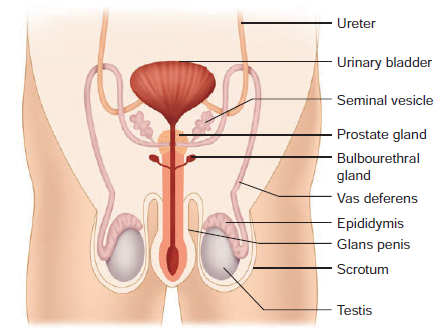Tissue Organ & System Level Organization
Animal Diversity • Structural HierarchyComprehensive analysis of biological organization from tissue differentiation to complex organ systems with evolutionary adaptations
Definition:
The hierarchy of biological organization progresses from cells → tissues → organs → organ systems, reflecting increasing complexity and functional specialization in metazoans.
Tissue Level
(Cnidarians, Ctenophores)
Organ Level
(Platyhelminthes, Nematodes)
System Level
(Annelids to Chordates)
I. Tissue Level Organization
A. Fundamental Tissue Types
Epithelial Tissue
- Simple Squamous: Lungs alveoli, blood vessels
- Stratified Keratinized: Mammalian skin
- Pseudostratified: Respiratory tract
- Transitional: Urinary bladder
Nervous Tissue
- Neurons: Multipolar (CNS), Bipolar (retina)
- Neuroglia: Astrocytes, Oligodendrocytes
- Ganglia: Peripheral nervous system
Muscular Tissue
- Striated: Voluntary (skeletal), Involuntary (cardiac)
- Smooth: Hollow organs (intestines)
- Specialized: Myoepithelial (glands)
Connective Tissue
- Loose: Areolar, Adipose
- Dense: Tendons, Ligaments
- Specialized: Blood, Bone, Cartilage
B. Tissue Level in Lower Metazoans
Cnidarian Tissue Organization
- Diploblastic: Ectoderm + Endoderm
- Mesoglea: Non-cellular gelatinous matrix
- Nerve Net: Diffuse nervous system
- Cnidocytes: Unique stinging cells
Ctenophore Specializations
- Colloblasts: Adhesive cells for prey capture
- Apical Organ: Statocyst for balance
- Mesodermal Muscles: Derived from endoderm
II. Organ Level Organization
A. Definition & Evolutionary Significance
Organs are structural and functional units composed of multiple tissue types working together. First appeared in Platyhelminthes (flatworms).
Key Characteristics:
- Parenchyma (functional cells) + Stroma (supportive tissue)
- Specialized connective tissue capsules
- Vascularization in higher forms
- Nerve supply for regulation
Evolutionary Advantages:
- Division of physiological labor
- Increased functional efficiency
- Body plan complexity
- Adaptive radiation potential
B. Comparative Organ Systems Analysis
| Phylum | Primitive Organs | Advanced Organs | Specializations |
|---|---|---|---|
| Platyhelminthes | Pharynx, Flame cells | – | Protonephridia, Bilobed brain |
| Nematoda | Pseudocoelom, Pharynx | – | Hydrostatic skeleton, Amphids |
| Annelida | Nephridia, Ganglia | Closed circulatory system | Metamerism, Chloragogen cells |
| Arthropoda | Malpighian tubules | Compound eyes, Book lungs | Ecdysis, Hemocoel |
III. System Level Organization
A. Major Organ Systems in Vertebrates
Circulatory System
- Open (Arthropoda) vs Closed (Annelida, Vertebrates)
- 2/3/4 chambered heart evolution
- Portal systems (Hepatic, Renal)
Nervous System
- Nerve net → Ganglia → Brain evolution
- 12 cranial nerves in mammals
- Autonomic vs Somatic divisions
Respiratory System
- Cutaneous → Branchial → Pulmonary
- Countercurrent exchange in fish gills
- Surfactant in mammalian alveoli
Excretory System
- Protonephridia → Metanephridia → Kidneys
- Loop of Henle adaptation
- Ammonia → Urea → Uric acid
Digestive System
- Blind sac (Cnidaria) → Tube-within-tube
- Ruminant vs Monogastric stomachs
- Caecum adaptations
Reproductive System
- Hermaphroditism vs Gonochorism
- Yolk sac vs Placental development
- Estrous vs Menstrual cycles
B. Human System Integration
Homeostatic Regulation Examples:
1. Thermoregulation:
- Hypothalamus (Nervous)
- Sweat glands (Integumentary)
- Blood vessels (Circulatory)
2. Glucose Regulation:
- Pancreas (Endocrine)
- Liver (Digestive)
- Muscles (Muscular)
Exam Mastery: Advanced Insights
High-Yield Facts:
- Exception: Sponges (Porifera) lack true tissues but have pinacoderm and choanoderm
- Unique Tissue: Notochord in chordates is mesoderm-derived but vacuolated
- Evolution: Triploblasty enabled organ formation (mesoderm → muscle, connective tissues)
- Human Specific: 79 organs recognized (2017), largest is skin (15% body weight)
- Comparative: Cephalopod eyes (convergent evolution) vs Vertebrate eyes
Previous Years’ Questions:
- “Trace the evolution of excretory systems from flatworms to mammals with diagrams” (2023, 15 marks)
- “Compare tissue organization in Hydra and Earthworm. How does this reflect their phylogenetic position?” (2022, 10 marks)
- “Explain the statement: ‘The liver is both an organ and a system’. Justify with physiological examples” (2021, 7 marks)
- “Discuss how the transition from organ to system level organization enabled vertebrate success” (2020, 12 marks)
- “Differentiate between diploblastic and triploblastic organization with reference to tissue derivatives” (2019, 5 marks)

